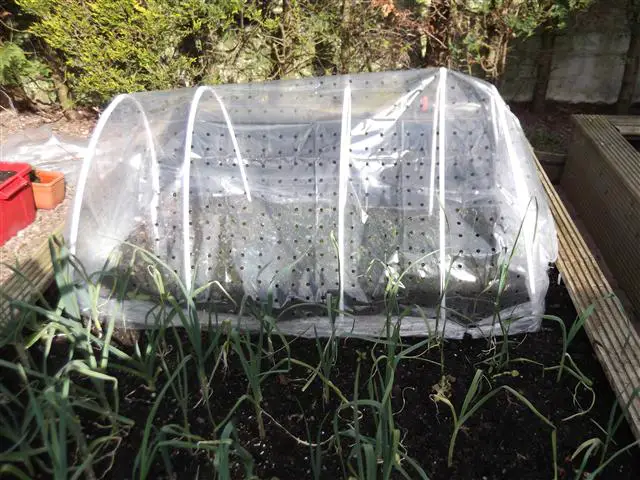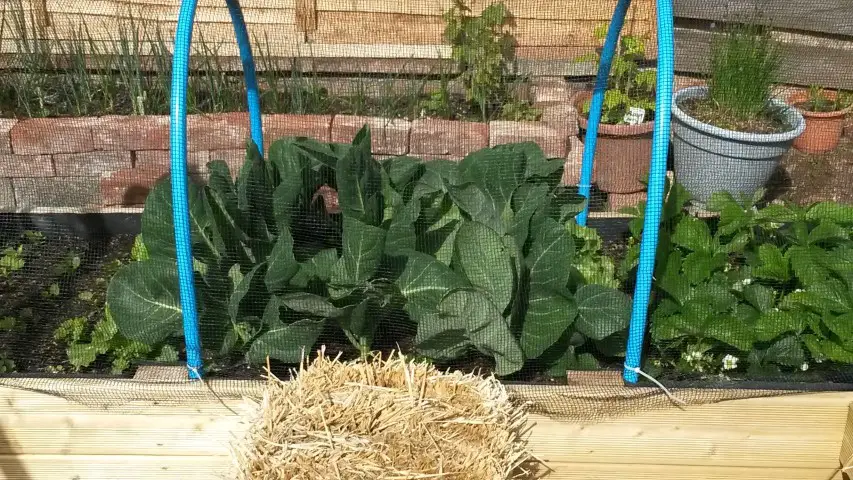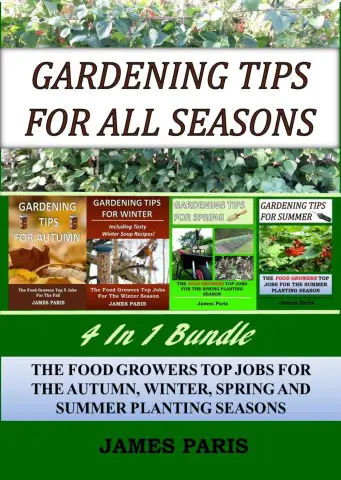
How To Winterize a Raised Garden Bed
So it comes to the end of the growing season for your vegetables. The harvest has been taken in, eaten or stored and now you are looking at an empty raised bed devoid of food and anticipating the coming winter.
The gardening season is over – or is it? Here is what you can do to overwinter your raised bed garden so that it is in top form for the coming Spring.
- Clear away any plant remains and detritus laying on the bed – including old root balls in the soil.
- Enrich the bed by digging in some well-rotted manure or garden compost.
- If you are not planning on growing winter cover crops, then cover the soil over with garden membrane to protect from heavy rain or snow.
- Consider a hoop cover which will enable you to grow some cold weather vegetable through most of the winter period.
Preparing/ Clearing the bed for winter.
Whilst it is true that the winter is a time of least activity for the vegetable gardener, there is nevertheless some things that need attended to – mainly in the area of preparation for the coming spring!
For the raised bed gardener though, this is not difficult as your whole growing area is easily accessible and not prone to the same restraints as a typical row garden.
To tidy up the bed at the end of the season is simply a case of using a small hand fork and teasing away the roots and old vegetation from the loose compost/soil mix in the bed.
A raised bed should never get compact or water-logged no matter what the conditions- provided the proper soil infill has been added of course.
To enrich the bed for the next season a covering of rotted compost or organic matter should be lightly raked in with your hand tool. Over the course of the winter this will break down and become absorbed into your soil in time for Spring growing season.

Winter Cover crops
If you are planning to grow cover crops such as red clover, cow peas, buckwheat, radish, fall rye, buckwheat, alfalfa or dwarf peas to enrich the soil for Springtime, then this means that you will not have to weed & feed the soil at all just go ahead with the planting and the rest will take care of itself.
Cover crops – also known as green crops or green manure – can be purchased in a mixed packet that includes various varieties including those mentioned above.
that includes various varieties including those mentioned above.
Come the spring time most of the cover crops will have died off and what remains can be turned over into the bed to add nutrients and help with soil quality.
Why plant cover crops?
Cover crops do a number of things which are beneficial for your raised bed.
- Enrich the soil with nutrients
- Raise the organic matter level
- Help with ‘friability’ of the soil mix
- Increase yield potential
- Protects the soil against severe weather conditions
Late Autumn crops
If you are growing strawberries, then of course you will want to leave them in the soil and cover only when they are fully dormant over winter and protect them from the very worst of the weather.
This is true also of other tap-root veggies such as carrots or parsnips which can stand some mild winter weather so can be left in the ground that bit longer.
Other cold-tolerant crops that can be left in a raised bed longer
Broccoli, cabbage, chard, beets, brussels sprouts, onions, chives, kale, parsley, leeks and cauliflower can all stand some cold weather so can stay in the bed for longer as the late Autumn turns to the cold winter season.
This is especially the case in a raised bed garden as the soil/compost mix is not as cold being raised from the ground and made with a well-drained growing medium.
Consider a covered raised bed
A typical raised bed garden can be covered to form in effect a cold-frame or mini-polytunnel, this can increase your growing potential for several months.
A covered frame not only lets you plant and enjoy your veggies for longer into the late season, it also means that you can start growing at least 4 weeks before the normal time.
Also the covered raised bed is more productive and easier to use that the traditional covered row garden, because the soil in the traditional garden ground is colder for longer.

You will see in the picture a typical raised bed that I have simply added loops of MDPE plumbers pipe screwed to the sides. In the summer I cover this with butterfly mesh to prevent the cabbage moth, and in Autumn/Winter I cover with polythene to grow some mixed leaf’s for my winter salads.
With a little bit of ingenuity you can also make a flat wooden frame to add the loops to, then add this frame to the raised bed with hinges.
This enables the user to lift the whole ‘lid’ for easier access to the veggies without constantly having to pull aside the cover.
The winter season may well be a time of some quiet, but for the serious gardener there is always more growing/maintaining to be done!
All Seasons Gardening Tips on Amazon

